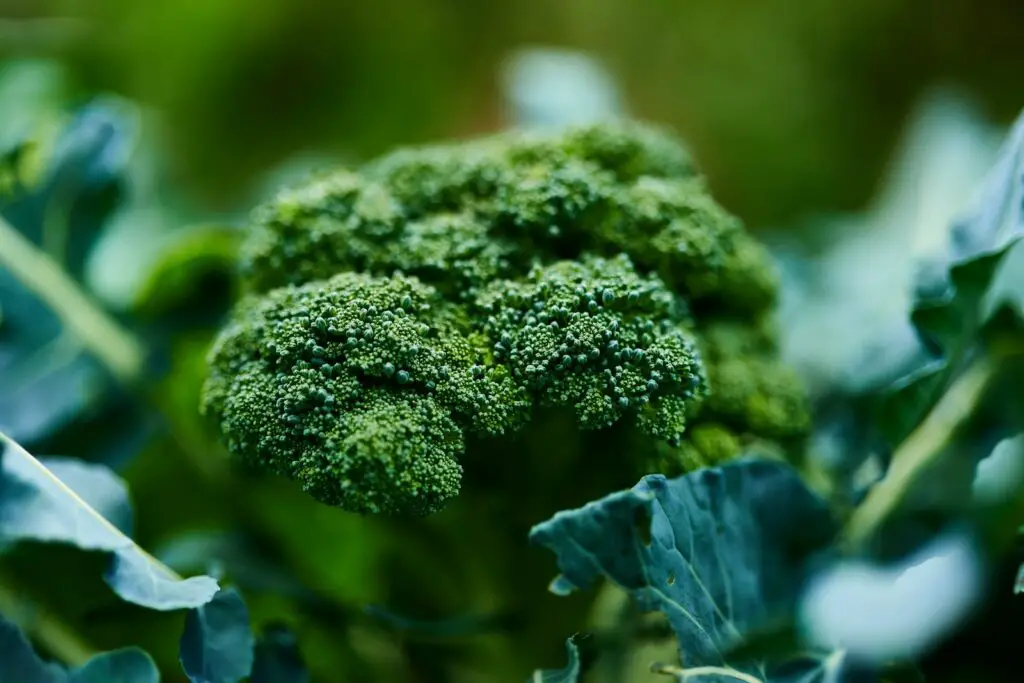
Broccoli is a nutritious and versatile vegetable that can be enjoyed in a variety of dishes. However, buying broccoli at the grocery store can be expensive, and the quality may not always be consistent. Growing broccoli from stem is a cost-effective and easy way to ensure a steady supply of fresh, healthy broccoli.
To grow broccoli from stem, first select a healthy, mature broccoli plant. Cut the stem of the broccoli plant at a 45-degree angle, leaving about 1 inch of stem attached to the crown. Place the stem in a container filled with water, making sure the cut end is submerged. Change the water every few days to keep it fresh.
After a few days, you should start to see roots growing from the cut end of the stem. Once the roots are about an inch long, you can transplant the stem into a pot filled with nutrient-rich soil. Keep the soil moist and place the pot in a sunny location. With proper care and attention, your broccoli plant should start producing new shoots and leaves within a few weeks.
Table of Contents
Understanding Broccoli
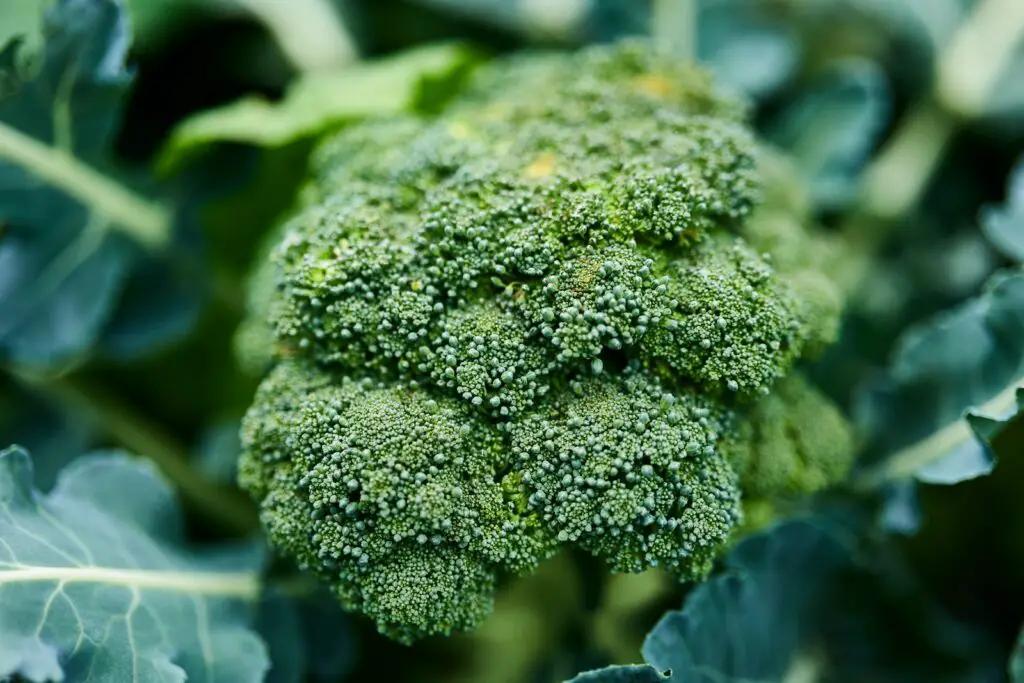
Broccoli is a member of the Brassica family, which also includes cauliflower, kale, and Brussels sprouts. The scientific name for broccoli is Brassica oleracea, and it is sometimes referred to as calabrese. Broccoli is a popular vegetable due to its high nutritional content, earning it the nickname “crown jewel of nutrition.”
There are several varieties of broccoli, including de Cicco and Romanesco. De Cicco broccoli is a smaller variety that produces multiple heads, while Romanesco broccoli has a unique spiral shape and a nutty flavor.
Broccoli is a cool-season crop that thrives in temperatures between 60 and 65 degrees Fahrenheit. It is typically grown from seeds, but it is also possible to grow broccoli from stem cuttings.
When growing broccoli from stem cuttings, it is important to select a healthy stem with several leaves. The stem should be cut at an angle, and the leaves should be trimmed to about half their size. The stem cutting should be planted in well-draining soil and watered regularly.
Broccoli is a nutritious vegetable that is low in calories and high in vitamins and minerals. It is a versatile vegetable that can be eaten raw or cooked in a variety of dishes. By understanding the basics of broccoli and how to grow it from stem cuttings, you can enjoy this nutritious vegetable in your own garden.
Nutritional Value of Broccoli
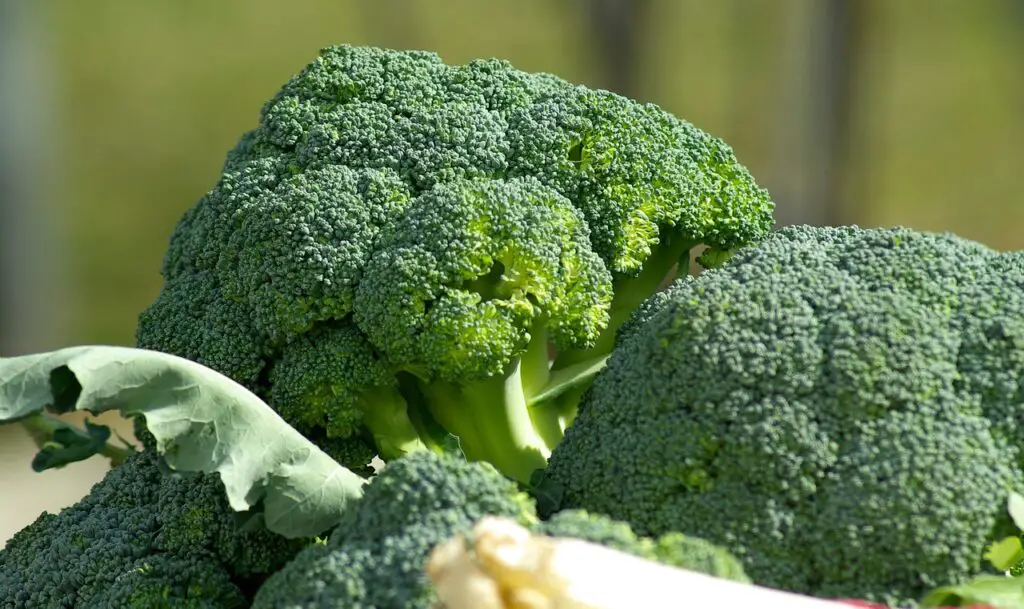
Broccoli is a highly nutritious vegetable that is a good source of vitamins, fiber, and other essential nutrients. Here are some of the key nutritional components found in broccoli:
- Vitamin A: Broccoli is a rich source of beta-carotene, which is converted into vitamin A in the body. Vitamin A is important for maintaining healthy vision, skin, and immune function.
- Vitamin C: Broccoli is also a great source of vitamin C, which is a powerful antioxidant that helps protect cells from damage. Vitamin C is also important for collagen production, wound healing, and immune function.
- Vitamin K: Broccoli is one of the best sources of vitamin K, which is important for blood clotting and bone health.
- Fiber: Broccoli is a good source of fiber, which helps promote healthy digestion and can also help lower cholesterol levels.
- Folic acid: Broccoli is also a good source of folic acid, which is important for healthy fetal development during pregnancy.
Overall, broccoli is a highly nutritious vegetable that can provide a wide range of health benefits. Incorporating broccoli into your diet can help ensure that you are getting the vitamins and nutrients your body needs to stay healthy and strong.
Selecting the Right Variety
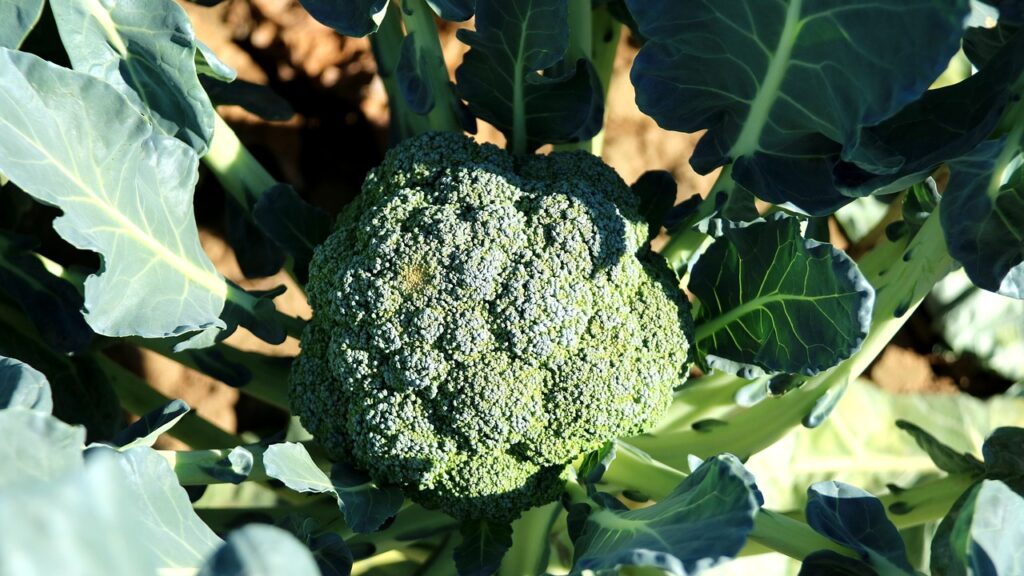
When it comes to growing broccoli from stem, selecting the right variety is crucial to ensure a successful harvest. There are several varieties of broccoli available in the market, but not all of them are suitable for stem propagation.
Calabrese and De Cicco are two popular varieties of broccoli that are commonly used for stem propagation. Calabrese is a traditional Italian variety that produces large heads with blue-green florets. De Cicco, on the other hand, is a smaller variety that produces multiple small heads. Both varieties are known for their vigorous growth and adaptability to different growing conditions.
Another popular variety of broccoli is Romanesco, which is known for its unique appearance and flavor. Romanesco has a distinct pyramid-shaped head with a bright green color and a nutty flavor. However, it is not recommended for stem propagation as it is a slow-growing variety and takes longer to mature.
When selecting a variety for stem propagation, it is important to choose a variety that is fast-growing and has a high yield. Some recommended varieties for stem propagation include Green Goliath, Premium Crop, and Packman. These varieties are known for their fast growth and high yield, making them ideal for stem propagation.
In summary, selecting the right variety is crucial for successful broccoli stem propagation. Calabrese and De Cicco are two popular varieties that are commonly used for stem propagation, while Romanesco is not recommended due to its slow growth. Other recommended varieties for stem propagation include Green Goliath, Premium Crop, and Packman.
Preparing the Soil
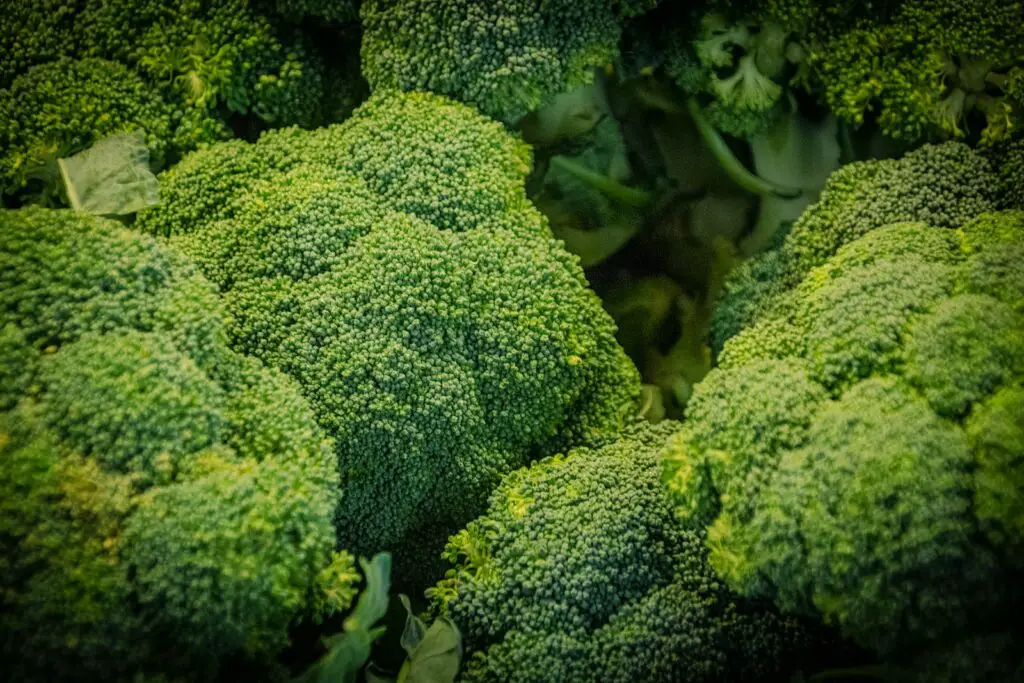
Growing broccoli from stem requires a fertile soil that is well-draining and rich in organic matter. Before planting, it is important to prepare the soil to ensure optimal growth and yield.
One of the first steps in preparing the soil is to test its pH level. Broccoli prefers a slightly acidic soil with a pH range of 6.0 to 7.0. If the soil is too acidic, lime can be added to raise the pH level.
Next, the soil should be enriched with organic matter such as compost or well-rotted manure. This will improve soil structure, increase soil moisture retention, and provide essential nutrients for the plants.
To improve drainage, it is recommended to add perlite or vermiculite to the soil. This will prevent waterlogging and ensure that the roots have access to oxygen.
Mulching is also an important step in preparing the soil. A layer of organic mulch such as straw or leaves will help to regulate soil temperature, conserve moisture, and suppress weed growth.
Finally, it is important to apply a balanced fertilizer to the soil before planting. This will provide the necessary nutrients for the plants to grow strong and healthy.
By following these steps, one can create a fertile soil that is ideal for growing broccoli from stem.
Planting Broccoli
To begin growing broccoli from stem, you can either start with seeds or seedlings. If you choose to start with seeds, you can either direct sow them outdoors or start them indoors in a seed starting mix. If you choose to start with seedlings, you can either purchase them or transplant them from your own garden.
Before planting, it’s important to prepare the soil by adding compost or other organic matter. Broccoli prefers well-draining soil with a pH between 6.0 and 7.0.
If starting with seeds, plant them 1/4 to 1/2 inch deep and keep the soil moist until they germinate. Once the seedlings have true leaves, thin them to about 18 inches apart.
If starting with seedlings, transplant them into the garden once they have at least two sets of true leaves. Be sure to space them about 18 inches apart and water them well after transplanting.
Regardless of how you start your broccoli, it’s important to harden off the seedlings before transplanting them outside. This means gradually exposing them to outdoor conditions over the course of a week or two.
With proper care and attention, your broccoli plants should thrive and produce delicious, nutritious heads for you to enjoy.
Caring for Growing Broccoli
Growing broccoli is a rewarding experience for gardeners. However, to ensure a healthy harvest, it is important to care for the growing broccoli plants properly. Here are some tips to help you care for your broccoli plants and ensure a bountiful harvest.
Watering
Broccoli plants require regular watering to thrive. It is important to water the plants deeply and regularly to ensure that the roots receive enough moisture. It is best to water the plants in the morning to avoid moisture loss due to evaporation during the day. Avoid watering the plants in the evening as it can lead to fungal diseases.
Sunlight
Broccoli plants require full sunlight to grow properly. They should receive at least 6 hours of direct sunlight every day. However, if you live in a hot climate, it is best to provide some shade to the plants during the hottest part of the day.
Temperature
Broccoli is a cool-season crop and thrives in temperatures between 60°F and 65°F. If the temperature rises above 75°F, the plants may bolt, which means they will produce flowers and seeds instead of edible heads. To prevent this, it is important to keep the plants cool by providing shade or watering them regularly.
Soil Moisture
Broccoli plants require well-draining soil that is moist but not waterlogged. Overwatering can lead to root rot and other fungal diseases, while underwatering can cause the plants to wilt and die. It is important to maintain the moisture level of the soil by watering the plants deeply and regularly.
Mulching
Mulching around the base of the plants can help retain moisture in the soil and prevent weed growth. It also helps regulate the soil temperature and protects the roots from extreme temperatures. Use organic mulch such as straw, leaves, or grass clippings to provide the plants with the nutrients they need to grow.
By following these tips, you can ensure that your broccoli plants grow healthy and produce a bountiful harvest.
Dealing with Pests and Diseases
Broccoli plants are susceptible to a variety of pests and diseases that can damage or kill them. Here are some common problems and how to deal with them:
Pests
Aphids
Aphids are small, soft-bodied insects that suck sap from the leaves and stems of broccoli plants. They can cause stunted growth and yellowing of the leaves. To control aphids, spray the plants with a strong jet of water to knock them off, or use insecticidal soap or neem oil.
Cabbage worms
Cabbage worms are the larvae of white butterflies. They feed on the leaves of broccoli plants, leaving large holes. To control cabbage worms, handpick them off the plants or use Bacillus thuringiensis (BT), a natural bacteria that kills them.
Flea beetles
Flea beetles are small, shiny black or brown insects that jump when disturbed. They chew small holes in the leaves of broccoli plants. To control flea beetles, use row covers or spray the plants with a natural insecticide such as pyrethrin.
Diseases
Clubroot
Clubroot is a soil-borne disease that causes the roots of broccoli plants to become swollen and distorted. Infected plants may wilt and die. To prevent clubroot, rotate crops and avoid planting broccoli in the same spot for at least three years.
Downy mildew
Downy mildew is a fungal disease that causes yellowing and wilting of the leaves of broccoli plants. It thrives in cool, humid conditions. To control downy mildew, remove infected leaves and spray the plants with a fungicide.
Black rot
Black rot is a bacterial disease that causes yellowing and wilting of the leaves of broccoli plants. It can also cause blackening of the stems and heads. To control black rot, remove infected plants and avoid planting broccoli in the same spot for at least three years.
Pests and Diseases
Pesticides
Pesticides can be used to control pests and diseases on broccoli plants, but they should be used sparingly and only as a last resort. Always follow the instructions on the label and wear protective clothing when applying pesticides.
Row covers
Row covers can be used to protect broccoli plants from pests and diseases. They are made of lightweight fabric and are placed over the plants to create a barrier. Row covers can also help to keep the plants warm and protect them from frost.
Fertilizing and Mulching Broccoli
Fertilizing and mulching are crucial steps in growing healthy broccoli plants. Proper fertilization and mulching will ensure that the plants have the necessary nutrients and moisture to thrive.
Fertilizing Broccoli
Broccoli plants require a balanced fertilizer that contains nitrogen, phosphorus, and potassium. A balanced fertilizer will provide the necessary nutrients for the plant to grow and produce healthy heads.
Organic fertilizers such as compost, manure, or bone meal can also be used to fertilize broccoli plants. These types of fertilizers provide a slow-release of nutrients that will last throughout the growing season.
It is important to avoid over-fertilizing broccoli plants as this can lead to excessive vegetative growth and reduced head size. Follow the instructions on the fertilizer label and apply the fertilizer evenly around the base of the plant.
Mulching Broccoli
Mulching is an important step in maintaining soil moisture and preventing weeds from growing around the broccoli plants. A layer of mulch around the base of the plant will help to retain moisture in the soil and reduce the need for frequent watering.
Organic mulches such as straw, leaves, or grass clippings can be used to mulch around the base of the broccoli plants. These types of mulches will break down over time and provide additional nutrients to the soil.
It is important to avoid mulching too close to the base of the plant as this can lead to rotting of the stem. Leave a small gap between the mulch and the base of the plant to allow for air circulation.
In addition to retaining moisture and preventing weeds, mulching can also help to regulate soil temperature and protect the roots of the plant from extreme temperatures.
By following these guidelines for fertilizing and mulching, broccoli plants will have the necessary nutrients and moisture to produce healthy and delicious heads.
Harvesting Broccoli
When it comes to harvesting broccoli, timing is crucial. Broccoli heads should be harvested when they are firm and compact, but before they start to flower. This is because once the broccoli plant begins to flower, the heads will become loose and the flavor will become bitter.
To determine the maturity of the broccoli heads, look for tight, dark green buds that are about 4-7 inches in diameter. The buds should be fully developed and tightly packed together. If the buds start to separate and become loose, it’s a sign that the broccoli is overripe and past its prime.
It’s important to harvest broccoli in a timely manner to prevent bolting, which is when the plant begins to flower. Bolting can be caused by hot weather, stress, or age. Once the plant bolts, the broccoli heads will become loose and the flavor will be negatively affected.
For a fall harvest, plant broccoli in mid-summer so that it matures in the cooler weather of the fall. For a summer harvest, plant broccoli in the early spring so that it matures in the cooler weather of the early summer.
When harvesting broccoli, use a sharp knife to cut the stem about 5 inches below the head. This will leave enough stem to allow for regrowth and the production of side shoots. Side shoots will continue to produce smaller broccoli heads that can be harvested over several weeks.
In summary, harvesting broccoli at the right time is crucial to ensure flavorful and compact heads. Avoid waiting too long to harvest and keep an eye out for signs of bolting. Use a sharp knife to cut the stem and leave enough stem for regrowth and the production of side shoots.
Storing and Using Broccoli
Broccoli is a highly nutritious vegetable that can be stored for a few days before consumption. Proper storage of broccoli is essential to maintain its freshness and flavor. Here are some tips on how to store and use broccoli:
- Storing broccoli: Broccoli should be stored in the refrigerator. It can be stored in a plastic bag or wrapped in a damp paper towel. This will help to keep it fresh for up to five days. Do not wash broccoli before storing it, as this can cause it to spoil more quickly.
- Storing broccoli stalks: Broccoli stalks can be stored separately from the florets. They should be wrapped in a damp paper towel and stored in a plastic bag. Stalks can be stored for up to five days.
- Storing broccoli crowns: Broccoli crowns should be stored in the refrigerator in a plastic bag or wrapped in a damp paper towel. They can be stored for up to five days.
- Storing broccoli greens: Broccoli greens can be stored in the refrigerator in a plastic bag or wrapped in a damp paper towel. They can be stored for up to five days.
- Using broccoli: Broccoli can be used in a variety of dishes. It can be steamed, roasted, or stir-fried. Broccoli can also be added to soups, stews, and casseroles. When cooking broccoli, it is important not to overcook it, as this can cause it to lose its nutrients and become mushy.
Overall, storing and using broccoli is easy and straightforward. By following these tips, you can ensure that your broccoli stays fresh and flavorful for longer.
Growing Broccoli in Containers
Growing broccoli in containers is a great way to enjoy fresh, healthy broccoli even if you don’t have a large garden. Container gardening allows you to grow vegetables in small spaces like balconies, patios, and decks. Here are some tips for growing broccoli in containers:
Choosing the Right Container
When choosing a container for growing broccoli, it is important to choose one that is large enough to accommodate the plant’s root system. A container that is at least 12 inches deep and 12 inches wide is recommended. Make sure the container has drainage holes to prevent water from accumulating and causing root rot.
Soil and Fertilizer
Use a high-quality potting soil that is rich in organic matter. Broccoli requires well-draining soil that is slightly acidic with a pH between 6.0 and 7.0. Mix in some compost or aged manure to provide additional nutrients to the soil. Fertilize the plants with a balanced fertilizer once a month.
Planting Broccoli
You can grow broccoli from seed or stem cuttings. To grow broccoli from seed, start the seeds indoors 6-8 weeks before the last frost. Transplant the seedlings into the container once they are 4-6 weeks old. To grow broccoli from stem cuttings, place the stem in a container of water until roots form. Then, transplant the stem into the container.
Care and Maintenance
Broccoli requires consistent moisture to grow properly. Water the plants regularly, especially during hot, dry weather. Mulch around the base of the plants to help retain moisture and prevent weeds. Broccoli is a heavy feeder, so make sure to fertilize the plants regularly. Keep an eye out for pests like aphids and cabbage worms, and treat them promptly if you see any signs of infestation.
Harvesting
Broccoli is ready to harvest when the heads are firm and tight. Cut the heads off the plant with a sharp knife, leaving a few inches of stem attached. After harvesting the main head, smaller side shoots will continue to grow and can be harvested as well. Enjoy your fresh, homegrown broccoli in salads, stir-fries, and other delicious dishes.
Common Questions About Growing Broccoli
Growing broccoli from stem can be a rewarding experience, but it can also be challenging, especially if you are new to gardening. Here are some common questions about growing broccoli that can help you get started:
- How do I grow broccoli from stem? To grow broccoli from stem, you need to cut a stem from a mature broccoli plant and place it in a container with water. After a few days, you should see roots forming on the stem. Once the roots are well-established, you can transplant the stem into soil and care for it like any other broccoli plant.
- How much water does broccoli need? Broccoli plants need consistent moisture to grow well, but they don’t like to be waterlogged. It’s best to water them deeply once or twice a week, depending on the weather and soil conditions. You can use a watering can or a drip irrigation system to ensure that the water reaches the roots without splashing the leaves.
- How long does it take for broccoli to grow? Broccoli plants take about 70 to 100 days to mature, depending on the variety and growing conditions. You can harvest the heads when they are firm and tight, before the flowers start to bloom. After you harvest the main head, the plant will often produce smaller side shoots that you can also eat.
- What pests and diseases affect broccoli? Broccoli plants are susceptible to several pests and diseases, including aphids, cabbage worms, flea beetles, and clubroot. You can prevent these problems by keeping the plants healthy and clean, using row covers or insecticidal soap, and rotating your crops. If you notice any signs of damage or disease, remove the affected plants promptly.
- Can I grow broccoli in containers? Yes, you can grow broccoli in containers as long as the containers are large enough (at least 12 inches deep and wide) and have good drainage. Use a high-quality potting mix and fertilize the plants regularly with a balanced fertilizer. Keep the soil moist but not soggy, and provide some shade during hot weather.
Remember that growing broccoli from stem requires patience, attention, and care. By following these tips and guidelines, you can enjoy a bountiful harvest of delicious and nutritious broccoli.